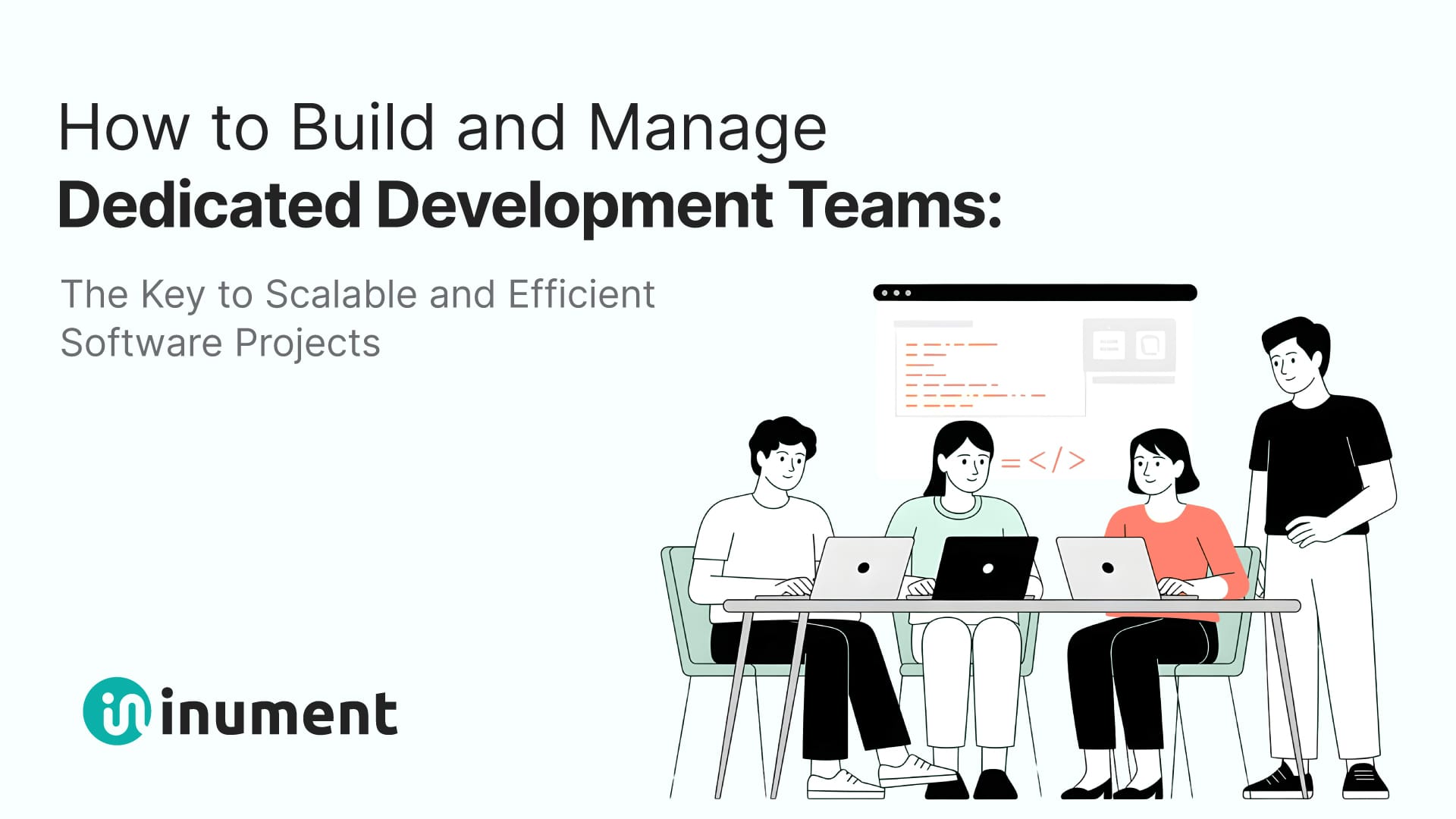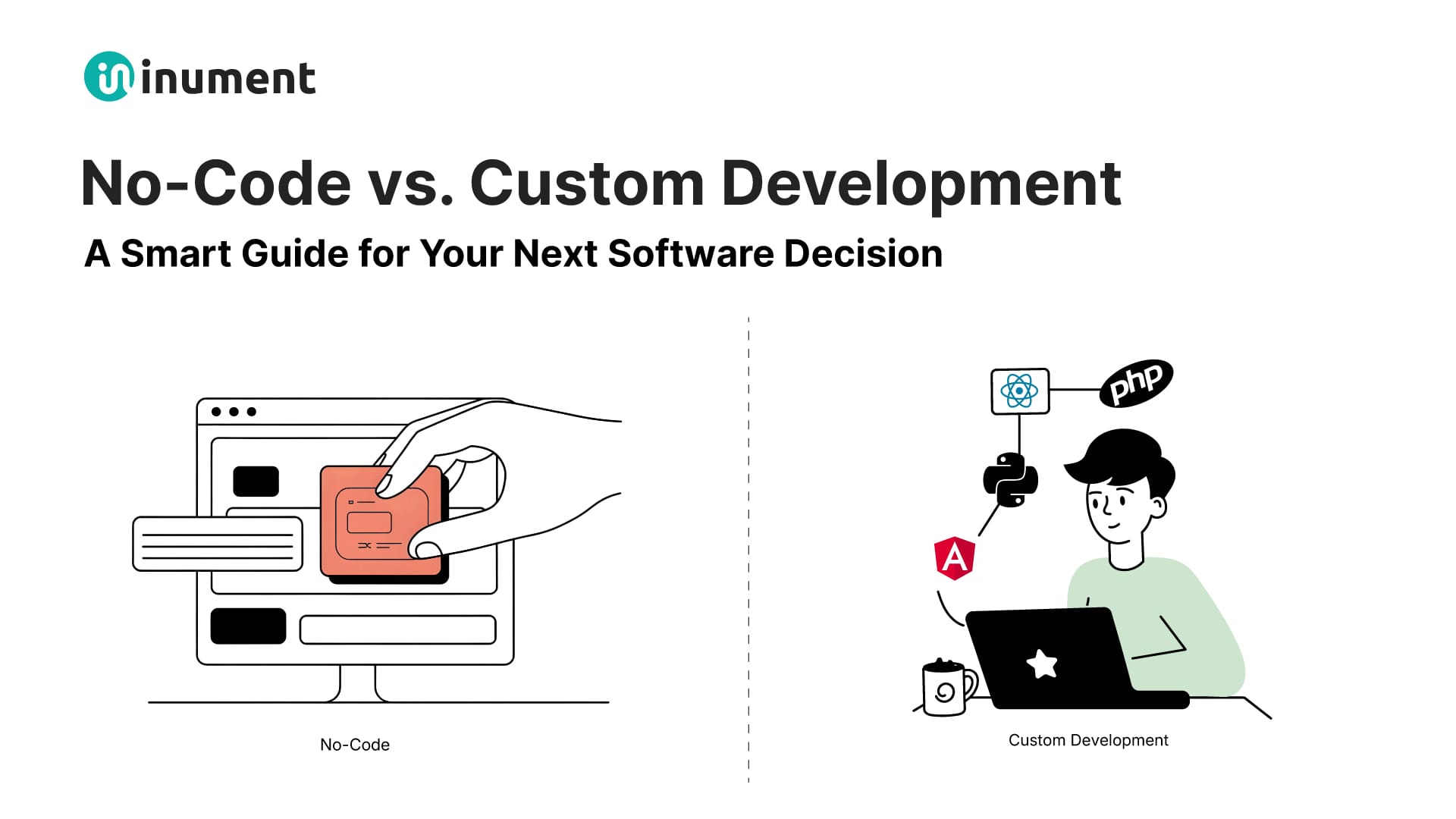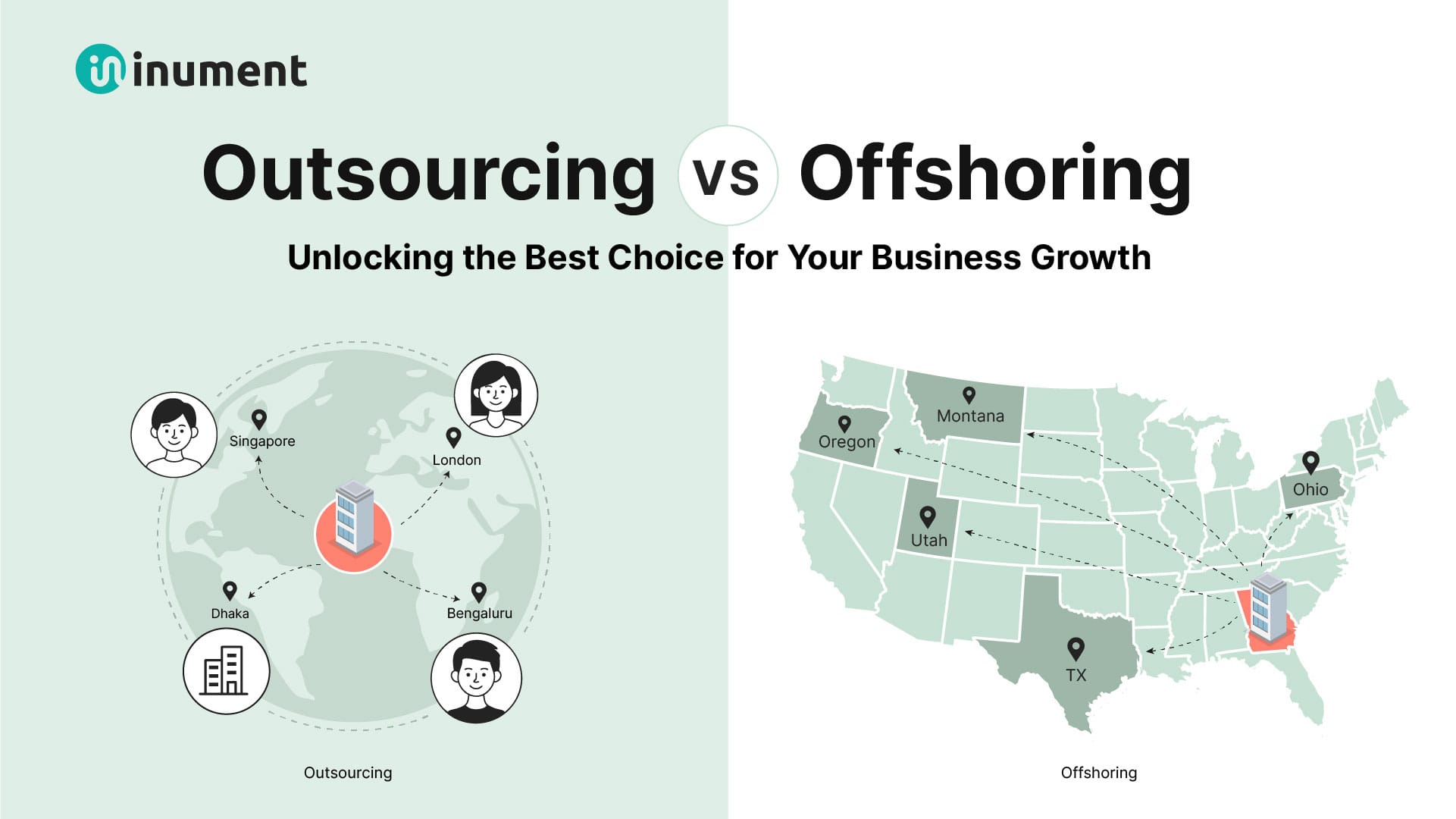Whether you’re building your next product, scaling quickly, or just trying to ship faster without overloading your in-house team, outsourcing development can be a game-changer. It offers access to top-tier global talent, faster delivery, and the flexibility to grow without growing overhead.
But let’s be real, not all outsourcing stories have happy endings.
While some businesses gain a strategic edge by tapping into global talent, others end up stuck with missed deadlines, miscommunication, and code that needs to be rebuilt from scratch.
The right outsourced team can help you scale faster, cut overhead, and deliver better products… without blowing your budget or burning out your core staff.
The difference between success and frustration? Choosing the right development partner from the very start.
In this guide, we’ll break down:
- Why outsourcing works (when done right),
- The criteria to look for in a reliable development partner,
- Mistakes to avoid, and
- How to set your business up for long-term success with a lean, high-performing external team.
If you’re planning to outsource your next software project, this is the clarity check you need before signing the dotted line.
Ready to dive in?
Benefits of Outsourcing Your Development Team
So, let’s clear the air first: is outsourcing a good or bad thing? Let’s find out!
Outsourcing isn’t just about reducing your IT costs anymore. Nowadays, it’s about gaining leverage. With the right team, outsourcing lets you build faster, tap into global expertise, and focus your internal efforts where they matter most.
When done right, it can dramatically enhance your team’s capabilities, reduce pressure on internal resources, and give you a competitive edge in product delivery.
Here’s a deeper look at why businesses from startups to enterprises are turning to outsourced development teams:
1. Access to a Global Talent Pool
Why settle for the best developers in your zip code when you can choose from the best in the world?
Outsourcing removes geographical limits and gives you access to global expertise across every major language, framework, and domain.
You’re no longer confined to local hiring cycles or inflated salaries. You can tap into world-class developers, designers, and product thinkers from around the globe. This opens up access to specialists in every major stack or niche you need.
Whether you need a React expert, a DevOps consultant, or a team that’s fluent in fintech compliance; there’s someone out there who’s already done it. This level of access is nearly impossible to replicate in-house without long, expensive hiring cycles.
2. Faster Time-to-Market
In a competitive market, speed is leverage. Outsourced teams are often ready to deploy from day one, no need for months of recruitment, onboarding, or ramp-up. With pre-assembled teams that already follow agile processes, you can move from planning to execution in days instead of weeks.
This speed is invaluable when entering a competitive market, racing toward a funding milestone, or trying to validate your MVP fast. With a dedicated, pre-assembled team, you skip the months of recruiting and onboarding.
Outsourcing lets you hit the ground running, often reducing your product launch timeline by up to 30–50%.

Source: Neontri
3. Cost Efficiency Without Compromise
Hiring senior developers, designers, QA testers, and project managers in-house can burn through budgets quickly. Outsourcing offers the same (or better) expertise at a fraction of the cost, particularly when working with nearshore or offshore partners.
And it’s not just about salaries, you save on:
- Payroll taxes
- Office space
- Additional utilities
- Hardware/software licenses
- Training and retention programs
It’s a flexible, scalable way to stretch your budget further without sacrificing quality. In outsourcing, you get senior-level work, minus the overhead.
4. Flexibility to Scale Up or Down
Outsourcing gives you the flexibility to ramp up resources for a major release, and scale back during quieter periods, without the awkwardness or cost of layoffs.
- Need to ramp up quickly for a product release?
- Or scale down during slower quarters?
Outsourcing makes it easy to adjust your development capacity on demand, without the stress of full-time headcount decisions. This elasticity is especially valuable for product-based companies or agencies managing variable project loads.
You can add:
- 3 developers for a high-priority sprint
- A UX designer for one product release
- A dedicated QA team during launch week
Then dial back when the job’s done; no strings attached.
5. Focus on Core Business Priorities
Let your in-house team focus on strategy, customer relationships, and growth while your outsourced team handles the technical heavy lifting. It’s a smart way to keep your team lean and focused, without bottlenecks.
By handing off build execution to a trusted external team, your internal leaders can focus on higher-value tasks: customer acquisition, investor relations, product strategy, and long-term vision. It’s about working on the business, not just in it.
Instead of spending hours tracking bugs or managing dev tickets, your CTO can lead innovation, while your product team focuses on what users really need.

Source: TopTal
6. Operational Expertise and Proven Process
The best outsourcing partners don’t just code, they bring battle-tested processes, agile methodologies, and devops workflows. That structure can seriously boost your overall efficiency and project visibility.
Alongside bringing niche talents, established outsourcing partners also bring process maturity, devops automation, QA protocols, agile methodologies, and software development best practices that keep your workflow smooth and transparent.
For teams that don’t have internal systems in place, this operational layer is a massive bonus. Outsourcing development team reducing miscommunication, missed deadlines, and technical debt.
Here are the things you can expect from your outsourced team:
- Sprint planning
- Daily stand-ups
- Code reviews
- QA pipelines
- Version control
- Transparent reporting
In short, outsourcing delivers everything you’d expect from an elite product team, without having to build it in-house. When done right, outsourcing isn’t a compromise, it’s a catalyst.
Next, let’s explore what goes wrong when companies don’t choose the right partner.
Common Mistakes Companies Make When Outsourcing
Outsourcing your development can unlock serious value, but only if you approach it with clarity and intention. Too many businesses jump in without the right prep and end up with half-finished code, poor communication, or teams that disappear when things get tough.
To help you avoid costly missteps, here are some of the most common outsourcing mistakes, and how to steer clear of them:
1. Prioritizing Cost Over Competence
Yes, cost savings are part of the appeal. But choosing the cheapest team often leads to buggy code, misaligned expectations, and endless rework. A low hourly rate doesn’t matter if you have to redo everything later.
So, focus on value, not just price. Look at track record, process, and communication before you make the final decision.
2. Vague Project Requirements
When your brief is unclear, even the best team will struggle. Ambiguity around deliverables, timelines, or priorities creates confusion, scope creep, and delays. To avoid this, spend time upfront on a clear scope, user stories, and success metrics. Good documentation saves time, effort, and money.
3. No Dedicated Point of Contact
When there’s no one managing the relationship internally, outsourcing becomes chaotic fast. Updates get lost, blockers go unresolved, and expectations diverge. To solve this, assign an internal project owner or product manager, even if part-time. They’ll keep things aligned and moving.

Source: Score.org
4. Skipping Communication Process Setup
Some teams think weekly emails will cut it. Disclaimer: they won’t. Without structured standups, shared tools, and async channels, feedback loops break down and misalignment grows.
Here’s how to mitigate this issue: align early on tools (Slack, Jira, Trello, Notion), meeting cadence, and escalation paths.
5. Ignoring Cultural & Time Zone Differences
Delayed responses = delayed delivery. Even great devs can feel disconnected if they don’t understand your working style or overlap with your timezone. So, look for nearshore or overlapping time zone teams, and test cultural fit with a pilot sprint before scaling.
6. No Exit or Handoff Plan
Many teams forget to think beyond the build phase. Ensure you retain IP, get clean documentation, and have a clear path for support or transition.
Clear these issues before you recruit any outsource development agency:
- What happens after the project ends?
- Who owns the code?
- How will knowledge transfer happen?
Sorting these issues means less friction, fewer surprises, and a much smoother outsourcing experience. The next step? Knowing what to look for in a great partner.
What to Look for When Choosing the Right Outsourced Development Team
Now, let’s dig deeper into what makes a good development team.
Finding an outsourced development team isn’t hard, there are thousands of agencies, freelancers, and platforms out there. But finding the right team is where most businesses go wrong. You need a team that’s aligned with your business goals, tech stack, workflow, and quality standards.
But how do you pick the right outsource development partner?
Here’s what truly matters when evaluating a potential outsourcing partner:
1. Technical Expertise That Matches Your Stack and Vision
Your ideal partner should have deep experience in your core technologies. Whether it’s Python, React, Node.js, AWS, or a legacy system, the right development partner will be able to understand your business goals and tailor your system to your specific needs.
However, tech skills alone aren’t enough. They also need to understand how to translate business goals into scalable solutions. So, look for portfolio examples, GitHub contributions, and architecture discussions, not just a bullet list of languages.
2. A Solid Track Record and Relevant Case Studies
Experience is everything. A partner who has built similar platforms (or tackled similar challenges) can anticipate roadblocks, suggest smarter workflows, and shorten your learning curve.
With the right outsource team in place, instead of starting from scratch, you benefit from a playbook that’s already been tested. This reduces risk and increases delivery confidence. Bonus points if they’ve worked in your industry or solved challenges like yours.
So, ask them questions like:
- Does the team have experience building similar platforms?
- Can they share client case studies, before-and-after results, or live demos?
3. Clear Communication and Project Management Process
Even the best developers can’t succeed if they’re not aligned with your goals. Poor communication leads to delays, missed feedback, and misaligned priorities.
But, you shouldn’t have to chase updates.
A trustworthy partner will set clear expectations, run regular standups, and provide updates without you having to chase them. Using agile delivery, weekly demos, shared tools, and clear documentation, they keep you in the loop, even when things change.
So, ask them to walk you through their sprint process, planning tools, and how they handle blockers. Don’t forget, great communication keeps everything transparent and collaborative, even across time zones.

Source: SoftKraft
4. Time Zone Compatibility and Cultural Alignment
If you’ve ever waited 18 hours for a reply to a simple Slack message, you already know why this matters.
When your outsourced team’s clock is completely out of sync with yours, even small decisions drag out. And culturally, little things like feedback styles or work habits can snowball into miscommunication.
Proximity matters, especially when speed is a priority. Nearshore or hybrid teams often hit the sweet spot between affordability and availability.
But it’s not just about clocks. Cultural alignment matters too. Different work styles, expectations, or even how feedback is handled can either make collaboration smooth or painfully awkward.
So when choosing a team, ask: Can we actually work together in real-time when it counts? Do we vibe on things like communication style, ownership, and pace?
You want a team that overlaps with your workday and communicates clearly in your preferred language and style. That’s what turns outsourced into in-sync.
5. Flexible Team Structure and Scalability
Let’s be real: projects don’t stay the same size. Needs change, and fast. One month you’re in maintenance mode, the next you need a full squad for a big product push.
A rigid team setup traps you: either overpaying for people you don’t need, or scrambling when demand spikes. That’s why flexible team structure is a big deal.
The right partner should offer a mix of senior and mid-level talent and lets you scale up or down as your business needs change; without drama and delays.
Ask upfront: How easy is it to add or drop resources when needed? Ask about team availability, onboarding timelines, and how they manage sudden pivots or scope changes. Flexibility today saves you headaches tomorrow.
6. Security, Compliance, and IP Protection
You wouldn’t hand over your house keys to just anyone, right?
The same logic applies to your code and business data. Your app idea, customer data, proprietary code: this stuff isn’t for public sharing. But not every outsourcing partner treats security like a priority.
Especially in B2B or regulated industries, you need more than working code. You need to know your data is safe, your app is compliant, and your IP belongs to you.
A legit outsourced team takes security seriously: encryption, NDAs, GDPR compliance, regular security audits, and clear policies around data handling, everything baked in.
You need more than verbal promises. Not just claims, actual processes and documentation. Ask: How do you protect client data? How is IP managed? A trustworthy partner will have a straight answer, and processes to back it up.

Source: Coconut Lab
7. Transparent Pricing and No Hidden Surprises
The last thing you want is to hit milestone three and find out your budget’s been blown. Nobody likes getting hit with surprise costs halfway through a project.
Some teams lure you in with a “cheap” hourly rate, only to sneak in extra fees or stretch timelines unnecessarily. One minute the price looks good; the next, you’re staring at a bill that wasn’t part of the plan.
Good outsourcing partners are upfront: hourly rates, flat fees, what’s included, what’s extra. Everything is clear before work begins.
If someone’s dodgy about money, talk early on. That’s a red flag. Ask: How do you handle billing? What happens if the scope changes? Understand their approach to scope changes, revisions, and long-term support before you start.
Because let’s face it: great work isn’t just about code. It’s about trust. And transparent pricing is part of that.
Choosing the right outsourced team isn’t about finding the flashiest pitch, it’s about finding a reliable, communicative partner who understands your goals, builds smart, and treats your product like their own.
Red Flags to Watch Out For
Choosing the wrong outsourced development team isn’t just a minor inconvenience. It can drain your budget, burn time, and stall your entire project. Even the slickest pitch decks and polished portfolios can hide trouble.
Here are some common red flags that should make you pause (or run):
- Vague or Over-Promised Timelines — If everything sounds “easy” and “fast” without specifics, there’s probably no real plan behind it.
- No Clear Process or Methodology — If they can’t explain how they manage projects: sprints, standups, and reviews. That’s a sign of disorganization.
- Lack of Transparency Around Pricing — Dodgy or unclear cost breakdowns almost always lead to “unexpected” charges later.
- Outdated Tech Stack — If they’re suggesting tools or frameworks that feel ancient, they may not be staying current, or worse; they’re cutting corners.
- Unclear Communication — Delayed responses, confusing updates, or inconsistent availability = headaches down the road.
- No Focus on Security or Compliance — If security feels like an afterthought in their pitch, that’s a big problem—especially in sensitive industries.
- One-Size-Fits-All Approach — If they treat every project like it’s identical, you won’t get the tailored solutions your business actually needs.
When in doubt, trust your gut. If something feels off during the first few conversations, it usually is.
How to Evaluate & Shortlist Your Ideal Partner
Once you’ve filtered out the obvious no-go’s, it’s time to get serious about choosing who actually makes the cut. This isn’t about luck. It’s about asking the right questions and spotting the teams that don’t just talk a good game but actually deliver.

Source: Acropolium
Here’s how to separate the solid partners from the smooth talkers:
- Step 1: Start with a Deep-Dive Call: Beyond email pitches, get them on a video call. Pay attention to how they explain things, how transparent they are about challenges, and whether they ask smart questions about your project.
- Step 2: Review Case Studies & Past Work: Don’t just skim a portfolio. Ask for specific case studies that match your industry or tech stack. Bonus points if they can walk you through real-world results.
- Step 3: Check References or Client Reviews: No credible reviews or references? That’s a red flag. Reach out to past clients if possible and ask about communication, reliability, and delivery quality.
- Step 4: Clarify Pricing, Contracts, and Scope Upfront: Make sure you get everything in writing. Fixed costs, hourly rates, scope of work, IP ownership; it should all be spelled out before anyone writes a single line of code.
- Step 5: Run a Small Test Project: Before committing long-term, give them a mini project or trial sprint. It’s the fastest way to see their actual workflow, speed, and problem-solving approach.
- Step 6: Evaluate Cultural & Time Zone Fit: After the initial onboarding, make sure their team isn’t completely out of sync with yours time-wise; and that their work style matches your expectations.
Engagement Models You Can Choose From
Not all outsourcing setups work the same way. How you engage with a development partner depends on your project’s size, speed, and flexibility needs.
Here are the most common engagement models to consider, and when each one makes sense:

If you’re unsure which model fits your needs, think about two things first:
- How clear is your project scope?
- How involved do you want to be in day-to-day management?
That usually points you in the right direction. Want help figuring it out for your specific situation? Feel free to reach out to our seasoned professionals any time.
How Inument Helps You Outsource Smart, Not Blind
At Inument, we don’t believe in one-size-fits-all outsourcing. Anyone can hand over a team and wish you luck, but that’s not how we operate.
We start by actually understanding your business: your goals, your product vision, your internal processes. From there, we help you figure out the right engagement model, team structure, and roadmap; not just what looks good on paper.
Whether you’re scaling fast or building long-term, we focus on flexibility, transparency, and clear communication from day one. Faster feedback, quicker results, and zero black-box mystery. You’ll always know what’s happening, when, and why.

Source: Neontri
Inument offers fully vetted teams matched to your specific needs, no random talent pool roulette. Our process is fully transparent, from scope and pricing to progress tracking. Combined with agile execution, that means we move fast without breaking things.
Security and compliance? Baked in. No hidden fees or “gotcha” invoices halfway through. Plus, we keep our teams aligned with your time zones and workflows so it feels less like outsourcing and more like an extension of your in-house crew.
That’s the difference between just hiring developers and building a partnership that actually moves your business forward.
Wrapping Up: Before You Sign That Contract…
Outsourcing isn’t just a box to check. It’s a long-term play that can shape how fast and how well your business grows. The wrong team will cost you more than just money: wasted time, lost momentum, even reputation damage if things go sideways.
That’s why before you sign on the dotted line, it’s worth pausing to look beyond the surface.
Ask yourself:
- Is this team structured to grow with us, or will we outgrow them in six months?
- Do they understand not just our tech stack, but our business goals and market?
- Is their process clear enough that we won’t be micromanaging or chasing updates?
- Are they proactive about things like security, compliance, and scalability; or just reactive?
At the end of the day, outsourcing should feel less like hiring outsiders and more like adding an extension to your core team. It’s about trust, communication, and shared momentum.
If you want to know more about staff augmentation, outsourcing, and custom software development, feel free to dive into our info-reach blog section. And if you’re ready to get more specific about your next project, we’re always up for a real conversation.
Whether you’re outsourcing for the first time or rethinking your current setup, Inument is here to help you build something great; on your terms, with the right team.
Schedule your discovery call today. Together, let’s figure out what “smart outsourcing” looks like for your business.







0 Comments